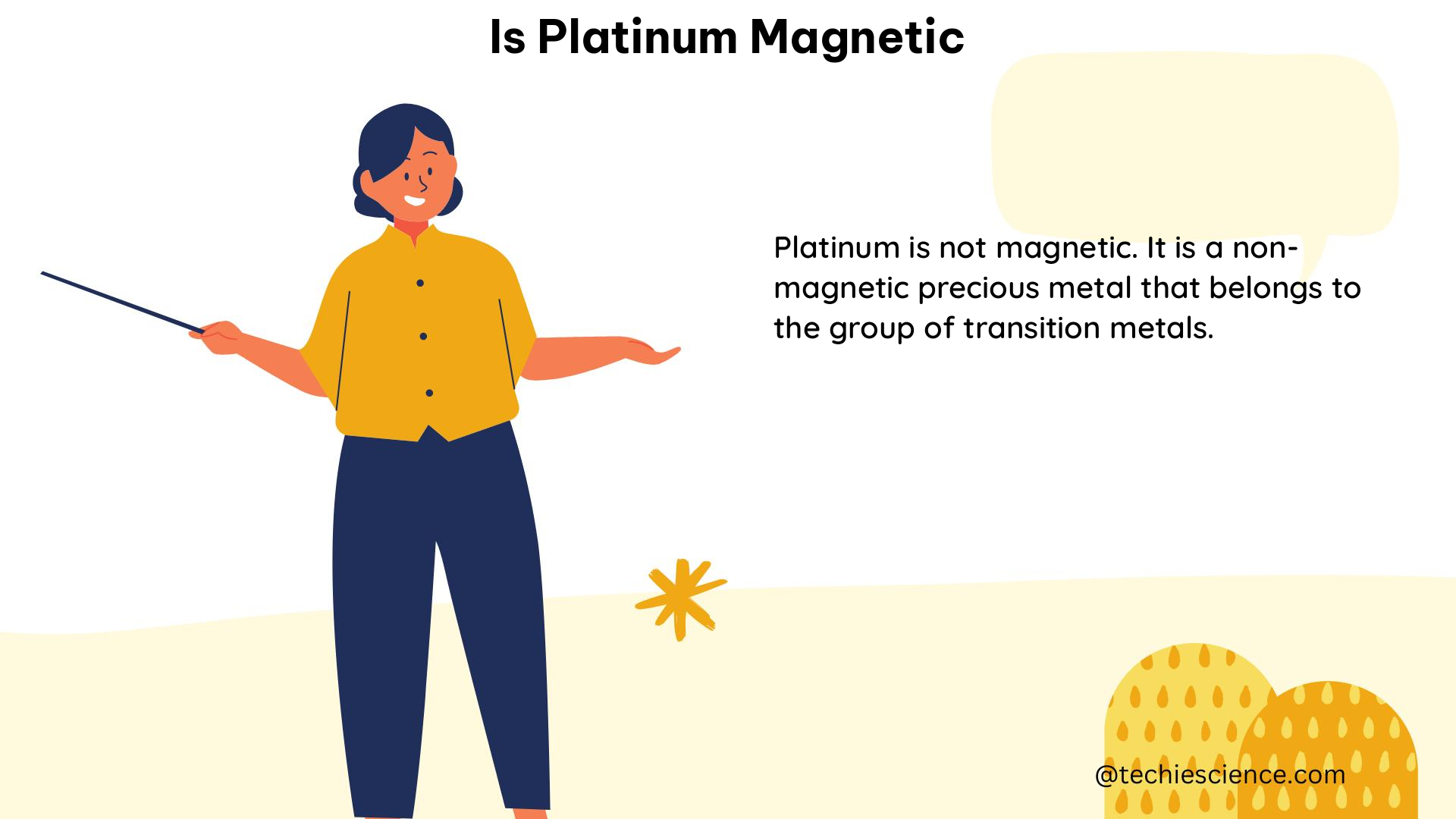Summary
Platinum is not a ferromagnetic or paramagnetic material, meaning it does not exhibit strong magnetic properties in its pure form. However, platinum can still interact with magnetic fields under certain circumstances, such as when it binds to magnetic microparticles. This interaction can be quantified using advanced analytical techniques like single particle-inductively coupled plasma-time-of-flight-mass spectrometry (SP-ICP-TOF-MS). While platinum’s magnetic susceptibility is relatively weak compared to ferromagnetic materials, understanding its behavior in the presence of magnetic fields is crucial for various applications, from medical diagnostics to materials science.
Platinum’s Atomic Structure and Magnetic Properties

Platinum (Pt) is a transition metal with the atomic number 78 and an electronic configuration of [Xe] 4f^14 5d^9 6s^1. This electronic structure is responsible for platinum’s unique physical and chemical properties, including its lack of strong magnetic behavior.
In general, the magnetic properties of a material are determined by the presence and arrangement of unpaired electrons in its atoms or molecules. Ferromagnetic materials, such as iron (Fe) and nickel (Ni), have a high density of unpaired electrons that can align with an external magnetic field, resulting in a strong magnetic response.
On the other hand, platinum has a completely filled 4f electron shell and a partially filled 5d shell, with only one unpaired electron in the 6s orbital. This electronic configuration does not support the formation of a significant magnetic moment or magnetic domain alignment, which are the underlying mechanisms of ferromagnetism and paramagnetism.
As a result, platinum is classified as a diamagnetic material, meaning it exhibits a weak, negative magnetic susceptibility in the presence of an external magnetic field. This diamagnetic behavior is caused by the slight realignment of the paired electrons in the atom’s orbitals, which opposes the applied magnetic field.
Quantifying Platinum’s Interaction with Magnetic Fields
While platinum is not considered a magnetic material in the traditional sense, it can still interact with magnetic fields under certain circumstances. One such example is the binding of platinum to magnetic microparticles, as demonstrated in a study using single particle-inductively coupled plasma-time-of-flight-mass spectrometry (SP-ICP-TOF-MS).
In this study, researchers investigated the binding of platinum to streptavidin-coated and azurin-coated magnetic microparticles. The microparticles were fully characterized for their iron concentration, particle concentration, and trace element composition, including platinum.
The results showed that both types of microparticles had a high particle-platinum association, with over 65% of the particles containing platinum. The platinum loadings were quantified as 0.18 ± 0.02 fg per particle for the streptavidin-coated microparticles and 0.32 ± 0.02 fg per particle for the azurin-coated microparticles.
It’s important to note that the platinum binding to these magnetic microparticles is not due to the magnetic properties of platinum itself, but rather the interaction between platinum and the magnetic microparticles. This interaction can be quantified using techniques like SP-ICP-TOF-MS, which allows for the differentiation between bound and unbound platinum, as well as the quantification of platinum on a particle-by-particle basis.
Magnetic Susceptibility of Platinum
To further understand the magnetic properties of platinum, researchers have conducted experiments using magnets to test the magnetic susceptibility of various elements, including platinum.
In one such experiment, a magnet was used to test the magnetic pull on different elements. The results showed that platinum had a very weak magnetic pull, if any, compared to other elements like nickel and cobalt, which are known to be ferromagnetic.
This observation is consistent with the understanding that platinum is a diamagnetic material, meaning it does not exhibit strong magnetic properties in its pure form or as part of a non-magnetic alloy. The weak magnetic response of platinum is due to the lack of unpaired electrons in its electronic configuration, as discussed earlier.
Practical Applications of Platinum’s Magnetic Interactions
While platinum’s magnetic properties are relatively weak, understanding its interactions with magnetic fields can be crucial for various applications. Some examples include:
-
Medical Diagnostics: Platinum-based compounds, such as cisplatin, are widely used in cancer treatment. The ability to track and quantify the binding of platinum to magnetic microparticles, as demonstrated in the SP-ICP-TOF-MS study, can provide valuable insights into the pharmacokinetics and biodistribution of these drugs, potentially leading to improved treatment strategies.
-
Materials Science: The interaction between platinum and magnetic materials can be exploited in the development of novel composite materials with unique properties. For instance, platinum-coated magnetic nanoparticles have been investigated for their potential use in catalysis, data storage, and biomedical applications.
-
Environmental Monitoring: Platinum is a trace element that can be found in various environmental samples, such as water, soil, and air. The use of techniques like SP-ICP-TOF-MS can help researchers quantify the presence and distribution of platinum in the environment, which is important for understanding its potential impact and developing appropriate mitigation strategies.
-
Nanotechnology: At the nanoscale, the interactions between platinum and magnetic fields can be exploited in the design of advanced materials and devices, such as sensors, actuators, and drug delivery systems.
Conclusion
In summary, while platinum is not a magnetic material in the traditional sense, it can still interact with magnetic fields under certain circumstances, such as when it binds to magnetic microparticles. This interaction can be quantified using advanced analytical techniques like SP-ICP-TOF-MS, which allows for the differentiation between bound and unbound platinum and the quantification of platinum on a particle-by-particle basis.
Understanding the magnetic properties and interactions of platinum is crucial for various applications, from medical diagnostics to materials science and environmental monitoring. As research in this field continues to evolve, the insights gained can lead to the development of innovative technologies and solutions that leverage the unique properties of this precious metal.
References
- Quantifying Platinum Binding on Protein-Functionalized Magnetic Microparticles using Single Particle-ICP-TOF-MS: https://www.researchgate.net/publication/379857659_Quantifying_Platinum_Binding_on_Protein-Functionalized_Magnetic_Microparticles_using_Single_Particle-ICP-TOF-MS
- Is Platinum Magnetic?: https://www.youtube.com/watch?v=sJ_SIOxMZ9E
- Is Platinum Magnetic?: https://bonzerbands.com/blogs/metals/is-platinum-magnetic
- Platinum-containing materials for magnetic resonance imaging and magnetic hyperthermia: https://pubs.rsc.org/en/content/articlehtml/2024/ay/d4ay00268g
Hi..I am Indrani Banerjee. I completed my bachelor’s degree in mechanical engineering. I am an enthusiastic person and I am a person who is positive about every aspect of life. I like to read Books and listen to music.